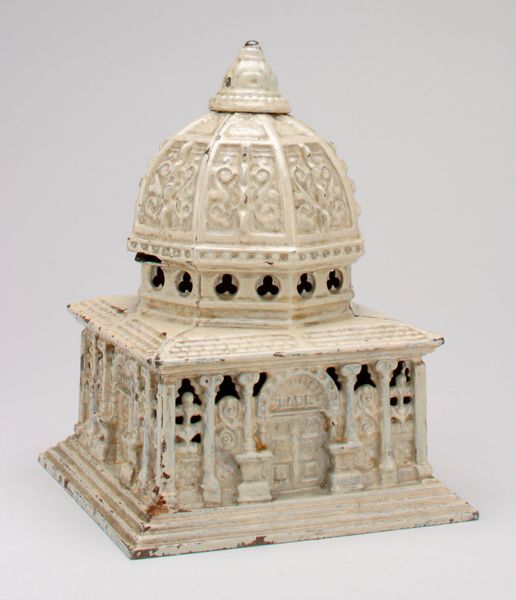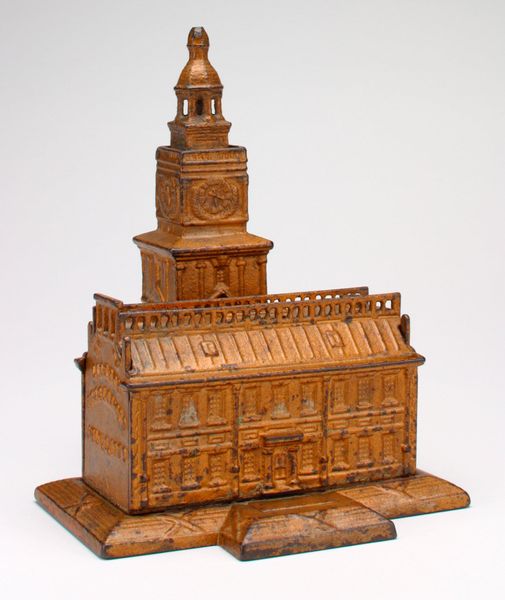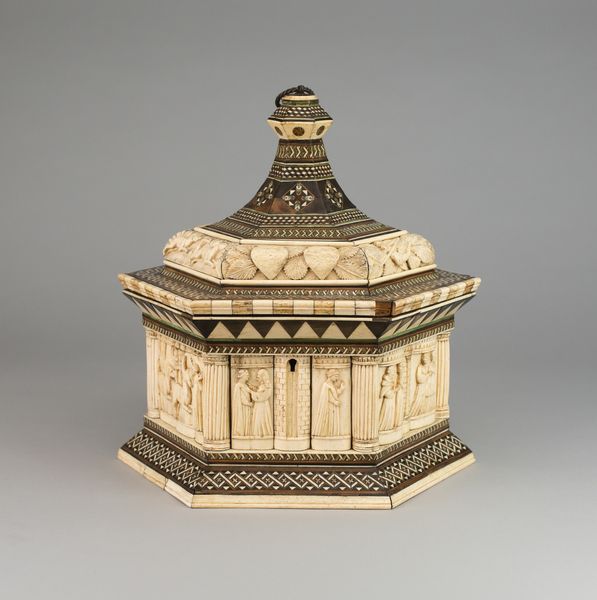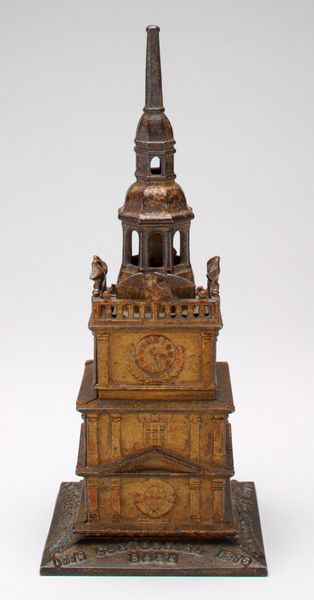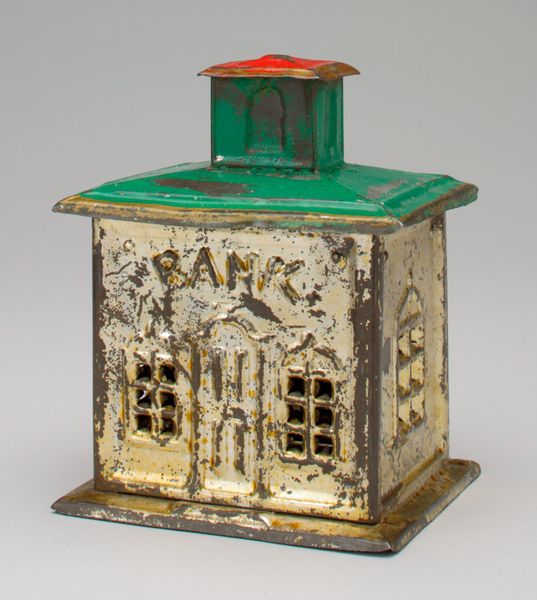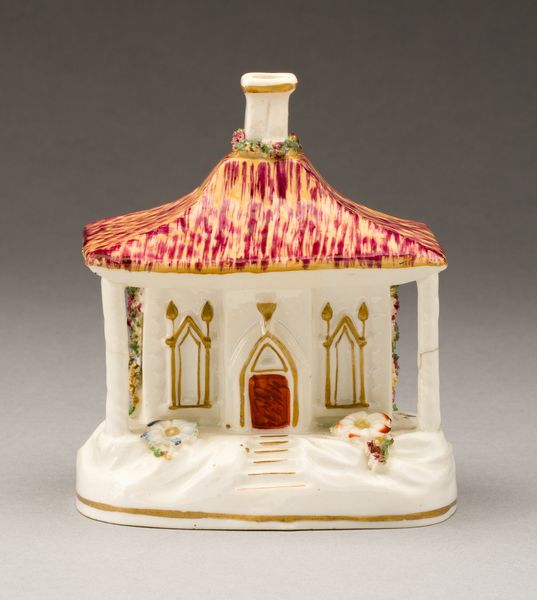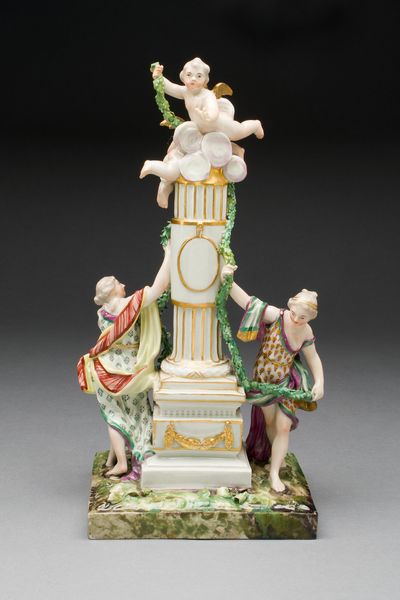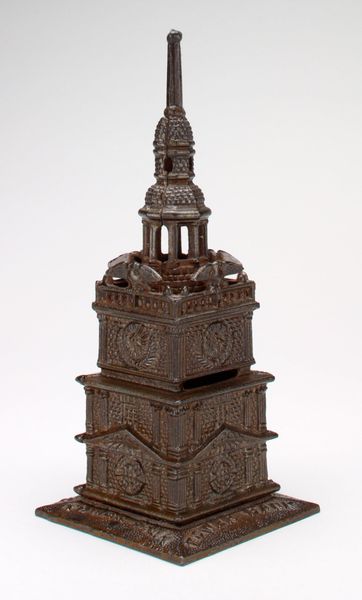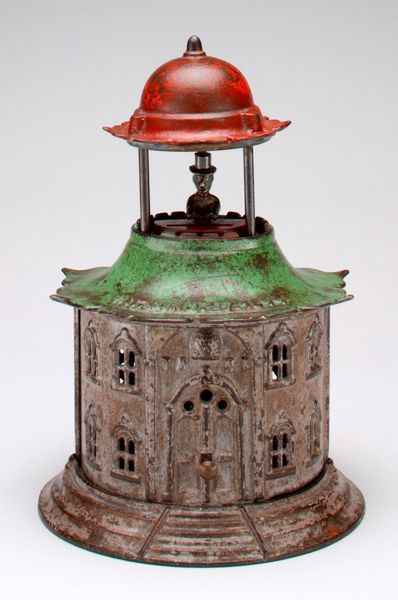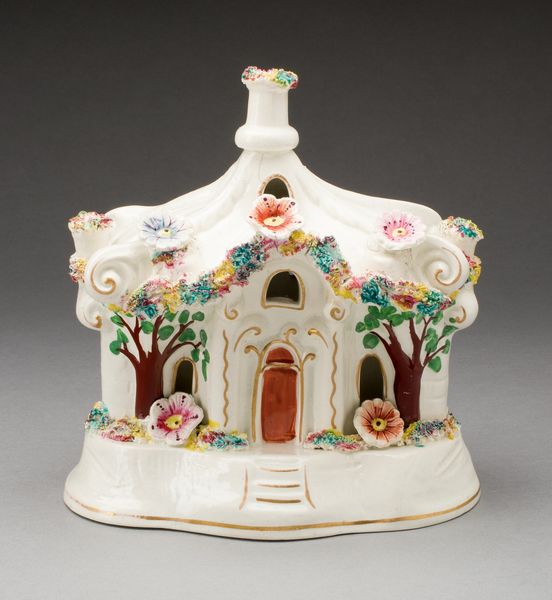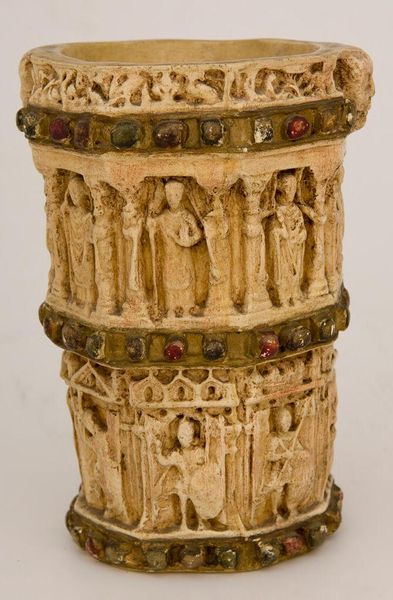
carving, sculpture, ivory
#
medieval
#
carving
#
sculpture
#
figuration
#
sculpture
#
men
#
medieval-art
#
ivory
#
miniature
Dimensions: Overall: 7 5/16 x 5 7/8 x 5 5/16 in. (18.5 x 15 x 13.5 cm)
Copyright: Public Domain
Curator: Before us is a Hexagonal Casket, created sometime between 1400 and 1450 by the North Italian Workshop. The principal medium here is ivory carving. What’s your first impression? Editor: It feels...ceremonial. The clean lines and the pale ivory lend it an aura of reverence, like it’s holding something incredibly sacred. The repetitive imagery of the couples—what's that about? Curator: These small figural carvings on each facet suggest ritualized unions and alliances, representing marriages as tools for consolidating power and ensuring lineage, perhaps within noble families of the era. Ivory itself possesses considerable symbolic value. It's a marker of rarity and therefore status. It visually connects the object to exotic trade routes, wealth, and power. Editor: Exactly. The object almost begs us to think about class, power, and maybe even forced unions or child marriages of the time. Are these celebrations of love, or merely strategic agreements playing out at the expense of individual women? Curator: I think both are very possible. The symmetry and geometric precision speaks to the medieval period's desire for order and structure in a tumultuous world. The overall architectural form evokes religious structures, symbolizing both earthly authority and divine approval of these social contracts. Editor: And isn't that the insidious nature of these objects? They project piety and prestige, when they might equally obscure more troubled social realities for many women. Curator: I find it interesting, though, how certain forms and materials carry over millennia to signal privilege, continuity. Ivory today has such loaded connotations due to environmental concerns. But then it also represented both beauty and consequence. It makes one consider how certain cultural values become attached to seemingly simple material objects, creating something akin to visual traditions. Editor: It definitely highlights the complex narratives that can hide beneath beauty, and why critical analysis remains essential, even—perhaps especially—when encountering seemingly simple artistic objects. Curator: It’s true. The casket presents us not just with a moment in time, but also encourages a dialogue about enduring themes: power, class, the control of women and how those themes intersect with belief and artistic expression over centuries. Editor: Definitely gives one much to contemplate beyond just the beauty of the object, then. A fascinating paradox of beauty and exploitation.
Comments
No comments
Be the first to comment and join the conversation on the ultimate creative platform.
